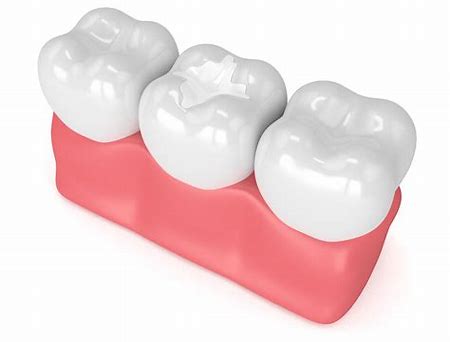What Is Pulpectomy?
A pulpectomy is a dental procedure that involves the complete removal of pulp tissue from the chamber of the tooth’s root in deciduous or primary teeth. The pulp is a bundle of nerves and blood vessels at the center of the tooth that helps to keep the teeth alive. A pulpectomy in deciduous teeth is typically done as a treatment for a tooth with a deep cavity that has spread to the pulp, causing infection and pain.

When is a Pulpectomy Needed in Deciduous Teeth?
A pulpectomy is typically performed when tooth decay or damage has progressed to the point that the pulp in the tooth has become infected or inflamed. If left untreated, the infection can spread to the surrounding teeth, causing more severe and widespread dental problems. Pulpectomy in deciduous teeth can also be done if there is an injury to the tooth that causes a pulp injury.
Procedure Of Pulpectomy
The following is a step-by-step guideline for a pulpectomy in deciduous teeth:
1. Numbing the area
A topical anesthetic gel is applied to the gums to numb the area. Once the gums are numb, a local anesthetic is injected into the surrounding tissues.
2. Accessing the pulp chamber
The tooth is isolated from the rest of the mouth with a rubber dam, and a small hole is drilled in the tooth’s crown. Access is then gained to the chamber of the tooth’s root.
3. Removing the pulp tissue
The pulp tissue is entirely removed from the tooth, including the nerve and blood vessels.
4. Cleaning the tooth’s canal
The canal is then thoroughly cleaned, widened and shaped with files to remove any remaining debris, infections, or bacteria.
5. Filling the canal
After cleaning, the canal is filled with a sterile material called gutta-percha, which seals the tooth from future infections.
6. Temporary filling
A temporary filling material is then placed on top of the gutta-percha to protect the tooth until a permanent filling or crown can be placed.
7. Follow-up visit
The child is carefully inspected to ensure that there are no complications, and a follow-up appointment is scheduled.
Advantages of a Pulpectomy in Deciduous Teeth
A pulpectomy in deciduous teeth has several benefits, including:
1. Pain relief: A pulpectomy procedure is done to eliminate the pain caused by the infection or inflammation of the pulp tissue.
2. Restores tooth function: The removal of the pulp and filling of the canal typically restores the tooth’s functionality, allowing the child to eat and speak comfortably.
3. Prevents further tooth decay: A pulpectomy stops further decay and any potential spread of the infection from the tooth to the surrounding teeth.
Disadvantages of a Pulpectomy in Deciduous Teeth
A pulpectomy in deciduous teeth also has some limitations, including:
1. Requires multiple visits: The pulpectomy in deciduous teeth treatment may require multiple visits to complete the procedure.
2. Can be costly: The cost of the pulpectomy procedure may vary based on the dentist’s experience and resources location.
3. Risks of complications: There is a slight risk of complications, including pain, swelling, and infection, after the procedure.
Wrapping Up,
A pulpectomy in deciduous teeth is a safe and effective dental procedure that is commonly used for children’s teeth. Although the procedure may look intense, the child’s discomfort is minimal, and it provides immediate pain relief while preserving the tooth’s natural growth process. Parents/guardians need to be proactive and take their children to the dentist for regularly scheduled checkups to avoid the need for more extensive procedures.
FAQs
Here are some frequently asked questions (FAQs) about pulpectomy:
1. What is pulpectomy?
Pulpectomy is a dental procedure that involves removing the infected or inflamed pulp tissue (the soft tissue inside the tooth) from the root canals of a severely decayed or damaged tooth.
2. Why is pulpectomy necessary?
Pulpectomy is necessary when the tooth pulp is infected or inflamed due to decay, trauma, or other dental problems. If left untreated, it can cause severe pain, abscesses, and even tooth loss.
3. How is the pulpectomy procedure performed?
The pulpectomy procedure begins with local anesthesia to numb the area around the affected tooth. The dentist then creates an opening in the crown of the tooth to access the pulp chamber and root canals. The diseased pulp is then removed, and the canals are cleaned, shaped, and filled with a dental filling material. A crown may be required to provide additional support to the remaining tooth structure.
4. Is pulpectomy painful?
Pulpectomy is not a painful procedure as local anesthesia is used to numb the affected area. However, some discomfort and sensitivity may be experienced after the procedure.
5. What can I expect post-treatment?
After the procedure, you can expect to experience some sensitivity, discomfort, and swelling for a few days. Over-the-counter pain relievers and ice packs can help alleviate these symptoms. You should also avoid eating hard, crunchy, or sticky foods for a few days.
6. Are there any risks or complications associated with pulpectomy?
Pulpectomy is a safe and effective procedure with a high success rate. However, there is a slight risk of infection, nerve damage, or root fracture. Your dentist will discuss the risks and benefits of the procedure with you before the treatment.


